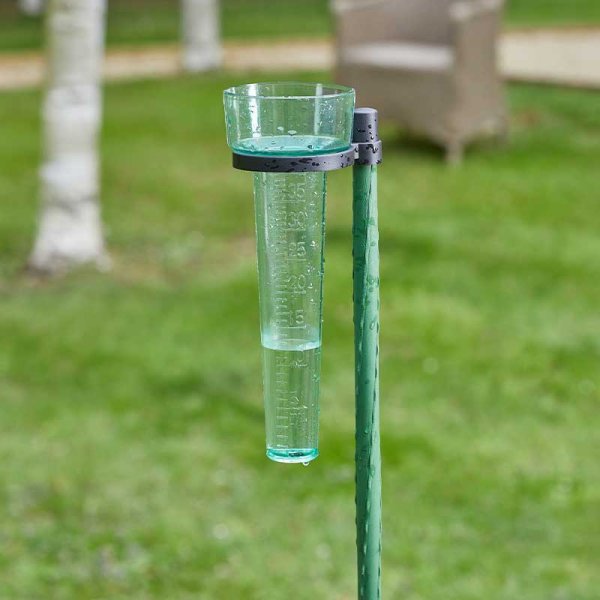How to Pick the Right Rain Gauge for Reliable Rainfall Monitoring
How to Pick the Right Rain Gauge for Reliable Rainfall Monitoring
Blog Article
Introducing the Science Behind Rainfall Gauges: Just How These Gadgets Play a Vital Duty in Climate Research Study and Ecological Tracking
Rainfall evaluates, relatively easy devices, hold an extensive relevance in the world of environment research study and environmental monitoring. As we peel off back the layers of this scientific veil surrounding rainfall gauges, we uncover a world where precision, information precision, and careful monitoring assemble to unveil a deeper understanding of our transforming environment and its impact on the world.
Significance of Rain Scales
Rainfall evaluates play an indispensable function in tracking and determining precipitation degrees, giving vital data for environment research study and analysis. These tools are basic in measuring the amount of rains that occurs in a specific location over a particular duration. By determining and accumulating rainwater, rainfall assesses deal beneficial insights into the circulation and intensity of rainfall, assisting meteorologists, hydrologists, and climatologists in recognizing weather condition patterns and fads.
Furthermore, long-lasting information collected from rain evaluates aids in assessing environment change effects and patterns, adding substantially to scientific research and decision-making processes. In essence, rain determines offer as essential devices in the field of meteorology and environmental scientific research, playing a critical function in advancing our understanding of weather condition and climate dynamics.
Sorts Of Rain Gauges

Functionality and Operation
In the realm of climate research study and meteorological studies, the effectiveness of rainfall assesses hinge on their detailed performance and accurate operational devices. Rainfall evaluates are made to accurately gauge the quantity of rainfall that tips over a certain area during a collection period. These tools typically include a funnel that collects rain and channels it into a measuring tube. The gauging tube is marked with calibrated dimensions that enable the exact quantification of rains.
The capability of rain determines is based on the concept of gauging and collecting rainwater in a standard fashion. This accumulated data is crucial for recognizing local weather condition patterns, tracking lasting climate patterns, and analyzing environmental effects. To make certain exact measurements, rainfall determines need to be tactically positioned in open areas far from blockages such as buildings or trees that could disrupt the collection procedure.
The functional facet of rain evaluates includes routine upkeep to avoid particles accumulation, calibration checks to maintain measurement accuracy, and data taping for analysis (rain gauge). On the whole, the functionality and operation of rainfall evaluates are vital for gathering reliable rainfall data vital to environment research and ecological tracking
Duty in Climate Study
Given the critical value of precise precipitation dimensions in recognizing weather condition patterns and environmental effects, the duty of rainfall gauges in climate study is indispensable. Rainfall evaluates offer necessary data for climate research by quantifying the amount of rainfall that drops over a certain location throughout a provided period. reference This data is critical for keeping an eye on long-lasting patterns in precipitation patterns, evaluating the effect of climate modification on rainfall circulation, and boosting environment designs.

Climate scientists utilize data collected from rainfall evaluates to analyze variations in rainfall degrees, determine regional climate patterns, and evaluate the effectiveness of water resource monitoring techniques. By contrasting historical rainfall information with current dimensions, researchers can discover changes in precipitation patterns, such as changes in the frequency or strength of rainfall events. This details is vital for comprehending how environment adjustment is influencing rainfall dynamics and can aid policymakers make informed decisions relating to adaptation and reduction approaches.
Applications in Environmental Tracking

In flood projecting, rainfall gauge information assists to track rainfall intensity and circulation, permitting authorities to provide timely warnings and take necessary measures to minimize flooding risks (rain gauge). Drought tracking depends on rain scale data to assess dampness degrees in the dirt and track precipitation deficiencies, helping in the identification of drought-prone locations and the application of dry spell feedback methods
Additionally, rainfall gauge data plays an essential role in water source monitoring by giving info on water accessibility and use trends. Furthermore, visit their website in farming, rainfall gauge data helps farmers in maximizing watering schedules, crop option, and general farm monitoring practices based on local rainfall patterns.
Conclusion
To conclude, rain assesses are crucial devices for gauging rainfall, giving beneficial information for environment research study and environmental tracking. With various types and functionalities, rain gauges play an essential role in understanding precipitation patterns and their influence on the setting. By properly determining rainfall, these gadgets add to Continue the innovation of clinical understanding and assistance in making informed decisions related to water source monitoring and catastrophe preparedness.
Rainfall determines play a vital function in tracking and gauging precipitation levels, supplying vital information for environment research and evaluation. The conventional rain scale, understood as the "tipping bucket" scale, is one of the most typically used tools. Ultrasonic rain gauges usage noise waves to detect the visibility of rainfall, offering real-time information on precipitation degrees.Climate scientists make use of data gathered from rainfall assesses to analyze variants in precipitation degrees, identify local climate patterns, and evaluate the efficiency of water resource administration approaches.In final thought, rainfall evaluates are essential devices for determining precipitation, supplying valuable data for environment research and environmental monitoring.
Report this page